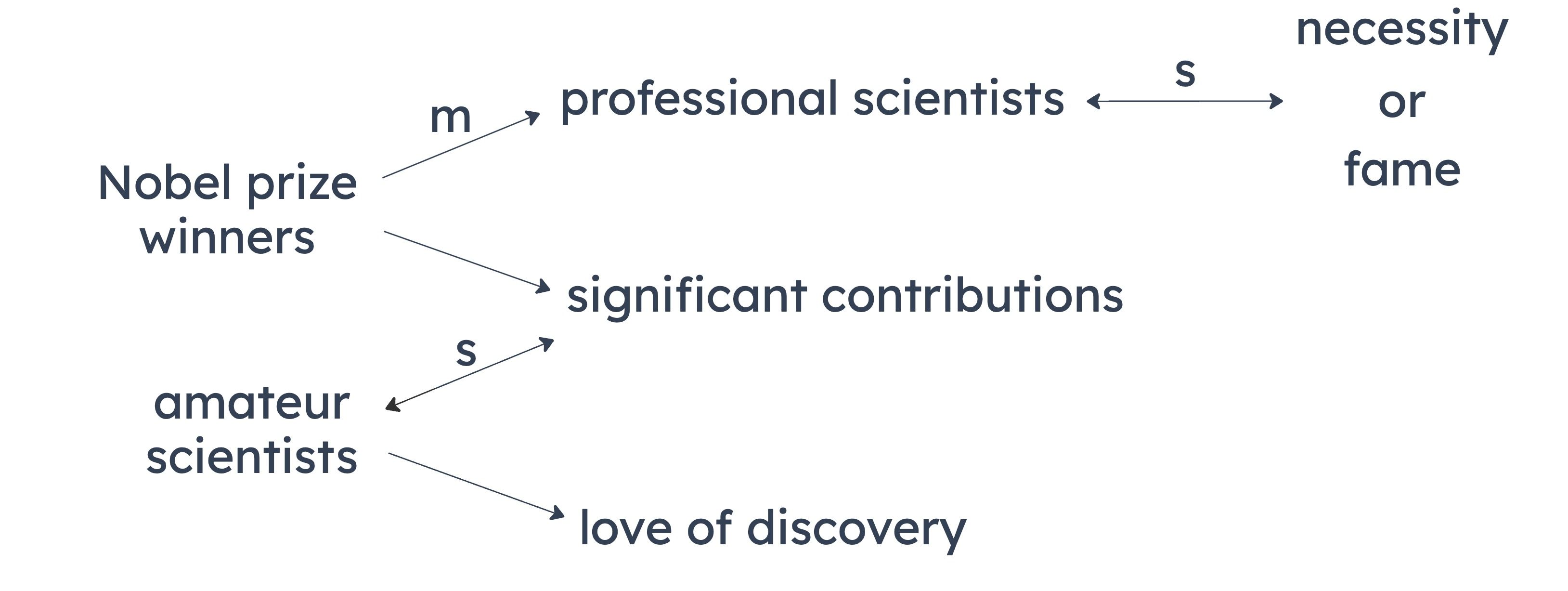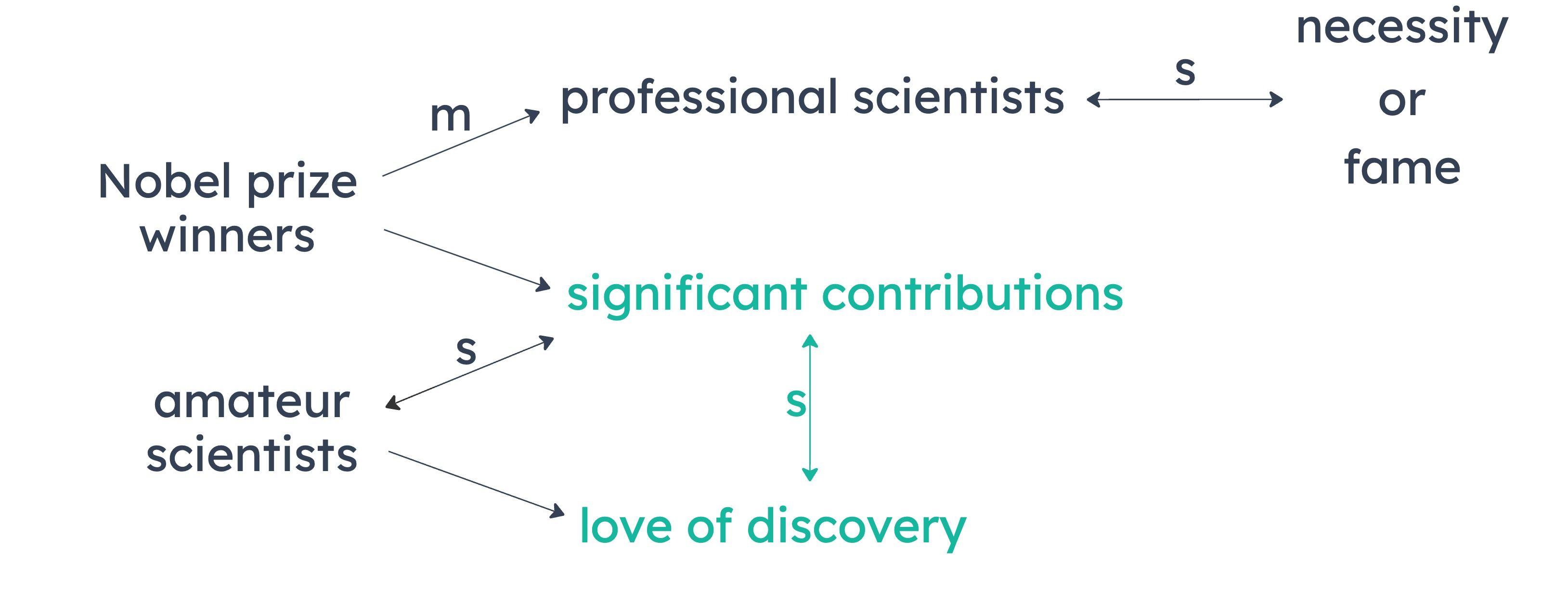A
It takes for granted that if medication can reduce the severity of heart disease, it can also prevent some cases of heart disease.
B
It overlooks the possibility that even if a disease is one of the most common in a nation, most people in that nation are not in significant danger of developing that disease.
C
It overlooks the possibility that preventing or reducing the severity of heart disease has little or no effect on any of the other most common diseases in industrialized nations.
D
It fails to address the possibility that taking an aspirin a day is not the single most effective measure for preventing heart disease.
E
It fails to address the possibility that the studies on the beneficial effects of aspirin were conducted only in industrialized nations.
Essayist: Winners of a Nobel prize for science, who are typically professional scientists, have all made significant contributions to science. But amateur scientists have also provided many significant contributions. And unlike professional scientists, who are often motivated by economic necessity or a desire for fame, amateur scientists are motivated by the love of discovery alone.
Summary
The stimulus can be diagrammed as follows:

Notable Valid Inferences
Some scientists who have provided significant contributions are motivated by the love of discovery alone.
Some professional scientists have provided significant contributions to science.
A
Some amateur scientists who did not win a Nobel prize for science nevertheless made significant contributions to science.
This could be false. We don’t know anything about the group of amateur scientists who have not won a Nobel prize for science.
B
Typically, winners of a Nobel prize for science are not motivated at all by the love of discovery.
This could be false. All we know about winners of a Nobel prize is that most of them are professional scientists and all of them have made significant contributions to science. We can’t make inferences about their motivations.
C
The love of discovery is the motive behind many significant contributions to science.
This must be true. As shown below, there is some overlap between the group of scientists who have made significant contributions and those who are motivated by the love of discovery. “Many” translates to “some.”

D
Professional scientists have made a greater overall contribution to science than have amateur scientists.
This could be false. We don’t have the information to compare the extent of overall contributions to science between professional and amateur scientists.
E
A professional scientist is more likely to make a significant contribution to science if he or she is motivated by the love of discovery.
This could be false. We don’t have any information that indicates how likely one is to make significant contributions to science depending on their motivations.
A
Some of the company’s sales representatives completed a degree in engineering while working for the company.
B
Most of the people hired by the company as sales representatives have had a degree in engineering but no sales experience.
C
Most of the customers that the company’s sales representatives work with have a degree in engineering.
D
Most of the people who apply for a sales representative position with the company do not have a degree in engineering.
E
Some of the people who the company has hired as sales representatives and who were subsequently not very good at the job did not have extensive previous sales experience.
A
calls an explanation of a phenomenon into question by pointing out that observations cited as evidence supporting it are also compatible with an alternative explanation of the phenomenon
B
establishes that an explanation of a phenomenon is false by demonstrating that the evidence that had been cited in support of that explanation was inadequate
C
rejects the reasoning used to justify a hypothesis about the origins of a phenomenon, on the grounds that there exists another, more plausible hypothesis about the origins of that phenomenon
D
argues in support of one explanation of a phenomenon by citing evidence incompatible with a rival explanation
E
describes a hypothesis about the sequence of events involved in the origins of a phenomenon, and then argues that those events occurred in a different sequence